Indigenous art, pearl farms, and top-notch sunsets on a Western Australia cruise.
Our Travel Partner, Virtuoso’s general manager Australia and New Zealand operations, Fiona Dalton, cruised through the continent’s Kimberley region, a rugged and mostly inaccessible stretch of Australia’s northwest coast, proved a welcome chance to reconnect with her favorite school subject: geology. On a seven-night sailing from Kuri Bay to Broom aboard Ponant’s 32-passenger Le Ponant, she hiked, swam, and observed ancient dinosaur footprints in a landscape she’d always dreamed of seeing, with insight from the line’s expedition team and a sleek perch to return to each day.
Here, Dalton shares what she learned on her Kimberley cruise.
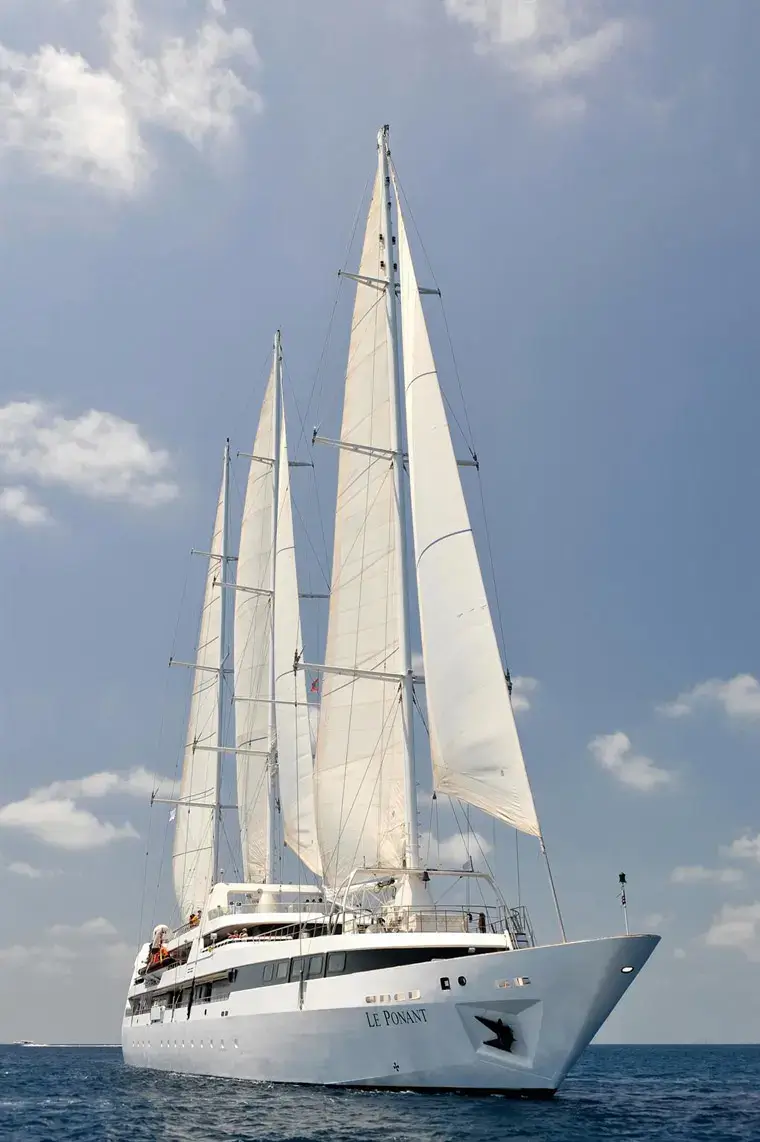
Le Ponant.
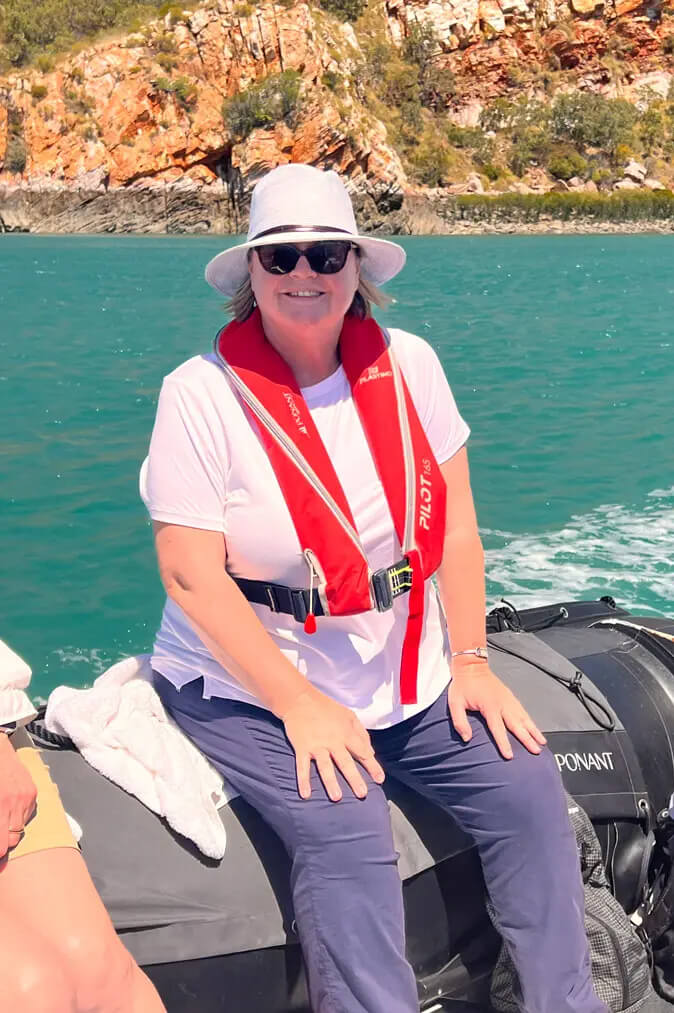
Fiona Dalton in the Buccaneer Archipelago.
Why put the Kimberley on your list?
The Kimberley is a remote region with vast landscapes of important geological and cultural significance. It encompasses thriving coral reefs, thousands of uninhabited islands, and rich bird and marine life. It’s an ancient and humbling reminder that we are only on this planet for a very short time.
What type of traveler is this destination for?
I would recommend the Kimberley to travelers who are into intrepid expeditioning. Whether you see it by land or by sea, as I did, every day is about being immersed in the environment. Activities can vary from learning about the geological landscape to trekking with locals to see Indigenous rock art, taking marine safaris by Zodiac, or swimming in safe (crocodile-free) waterholes. It’s active, it’s hot, and it’s incredibly fulfilling.
Best time of year to visit:
Between late April and early October. That’s the dry season, with stable and warm weather, and it’s when water flow is at its highest, making it the best time to see the falls.
The one item you should definitely pack?
Your camera, for those Kimberley sunsets.
What surprised you most about this trip?
The contrast of the colors. Until you see it in person, you can’t believe it. It’s breathtaking. The sky is bluer than anything I’ve ever seen; the sea is a magnificent blue-green. And the rocks! It’s all about the rocks. The Kimberley was formed 1,800 million years ago when it collided with the ancient Pilbara and Yilgarn land masses, forming today’s Australian continent. The colors come from the composition of flat-lying sandstone, siltstone, shale, and basalt, combined with hard igneous rocks, rich in iron, which were injected into the sandstone, then folded and buckled.
One thing to consider before going:
While you can swim safely during the dry season in Broome at the patrolled beach, it’s a definite “no” to swimming elsewhere in the sea. The region is teeming with “salties” (saltwater crocodiles) and sharks. There are also stinging jellyfish and sea snakes. If swimming regularly is important to you, I recommend choosing an expedition ship with an onboard pool.
Something to keep in mind about local etiquette:
The local Indigenous people are very welcoming and want to educate visitors about their sacred land. Learning about their rock art at various sites is a privilege, and it’s important to demonstrate respect by following your guide’s instructions about photographing sacred sites.
Make sure to ask your advisor to book:
If your trip to the Kimberley begins or ends in Broome, then I highly recommend a visit to Matso’s Brewery. Known as Australia’s most remote brewery, it’s also a great café and art gallery.
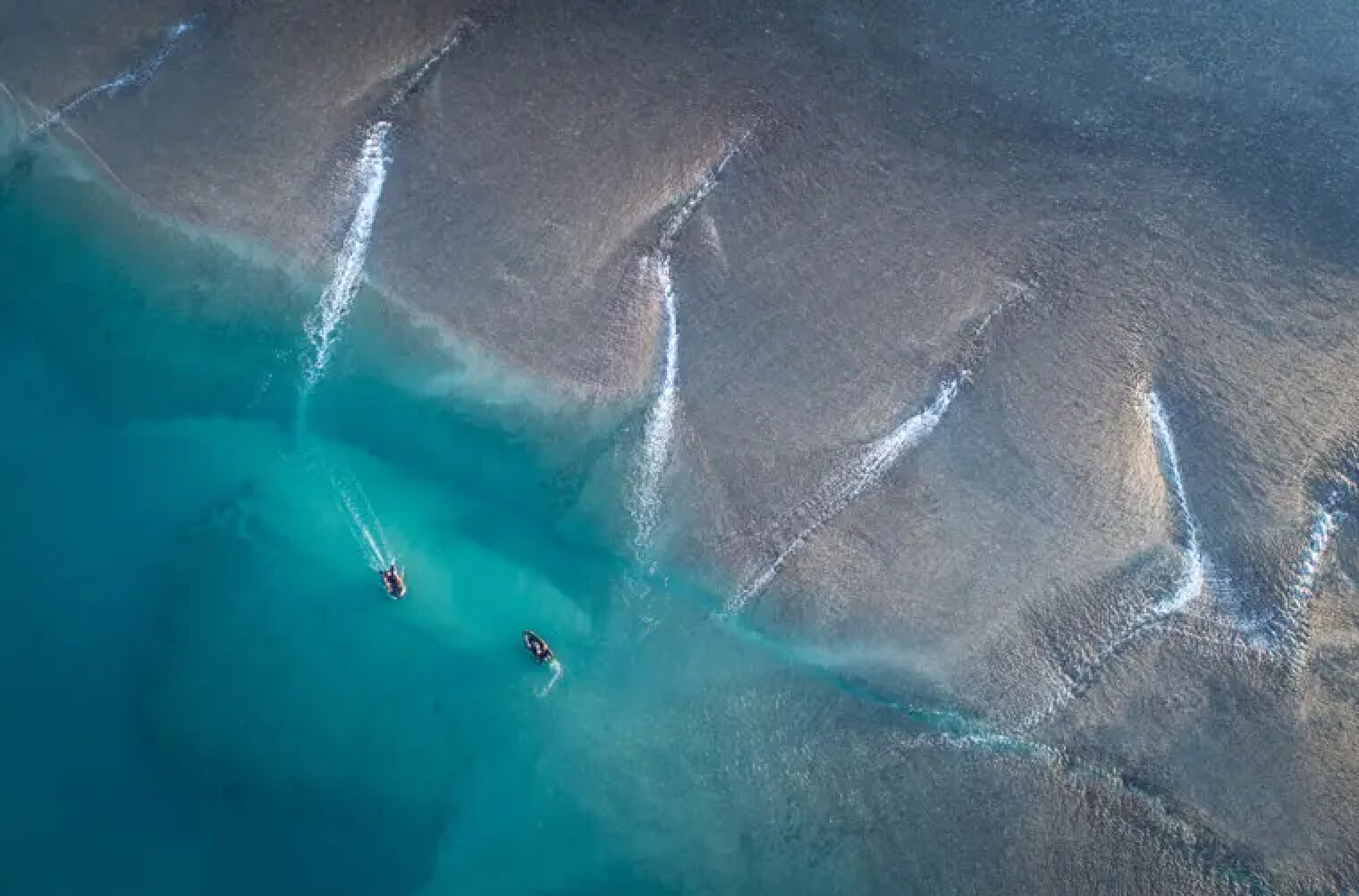
The Horizontal falls at Montgomery Reef
Getty Images
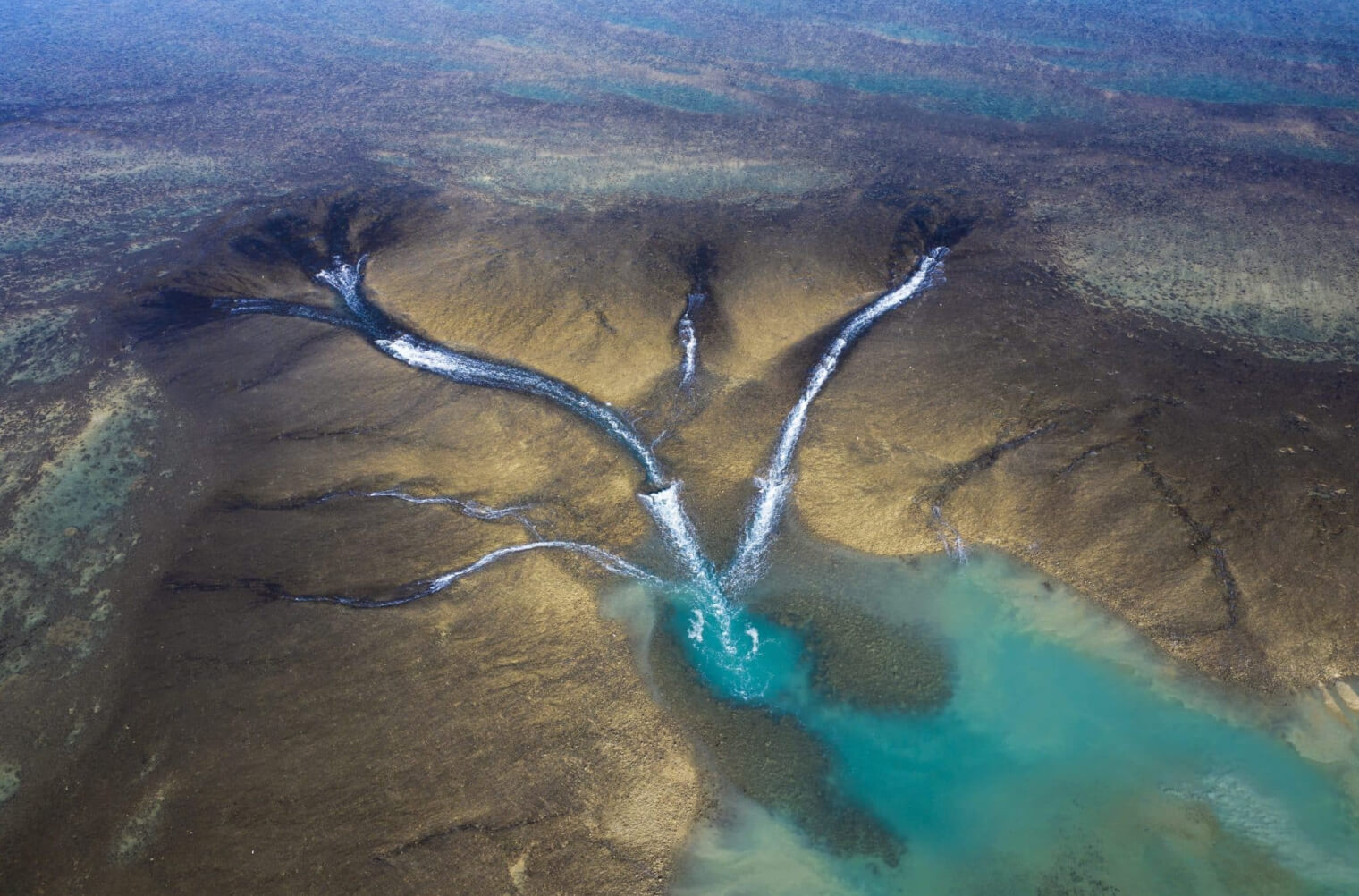
The Horizontal falls at Montgomery Reef
KAS Helicopters
Highlight of the trip:
We visited Montgomery Reef as the tide dropped nearly 40 feet, and it looked like the reef was rising out of the ocean before our eyes. Horizontal Falls is another incredible ocean phenomenon. Known as Garaangaddim by the Indigenous people, this is where some of the highest tides in the world help create a horizontal waterfall. As the tide turns each day, the falls reverse flow and the water builds up on one side or the other of the rocks.
Best meal you ate:
The captain’s welcome dinner on board Le Ponant. We had five courses with the freshest ingredients and paired wines. The kingfish ceviche was outstanding, and we got to enjoy it all on the ship’s deck.
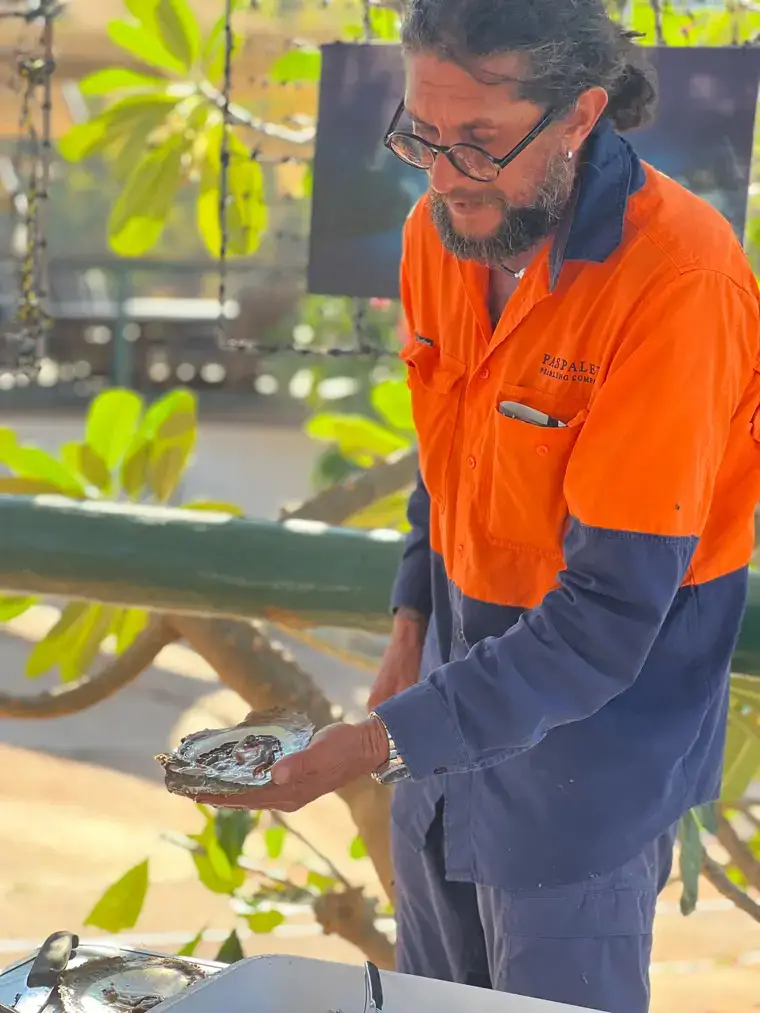
Getting the scoop at Pasapley’s pearl farm.
Courtesy of Fiona Dalton
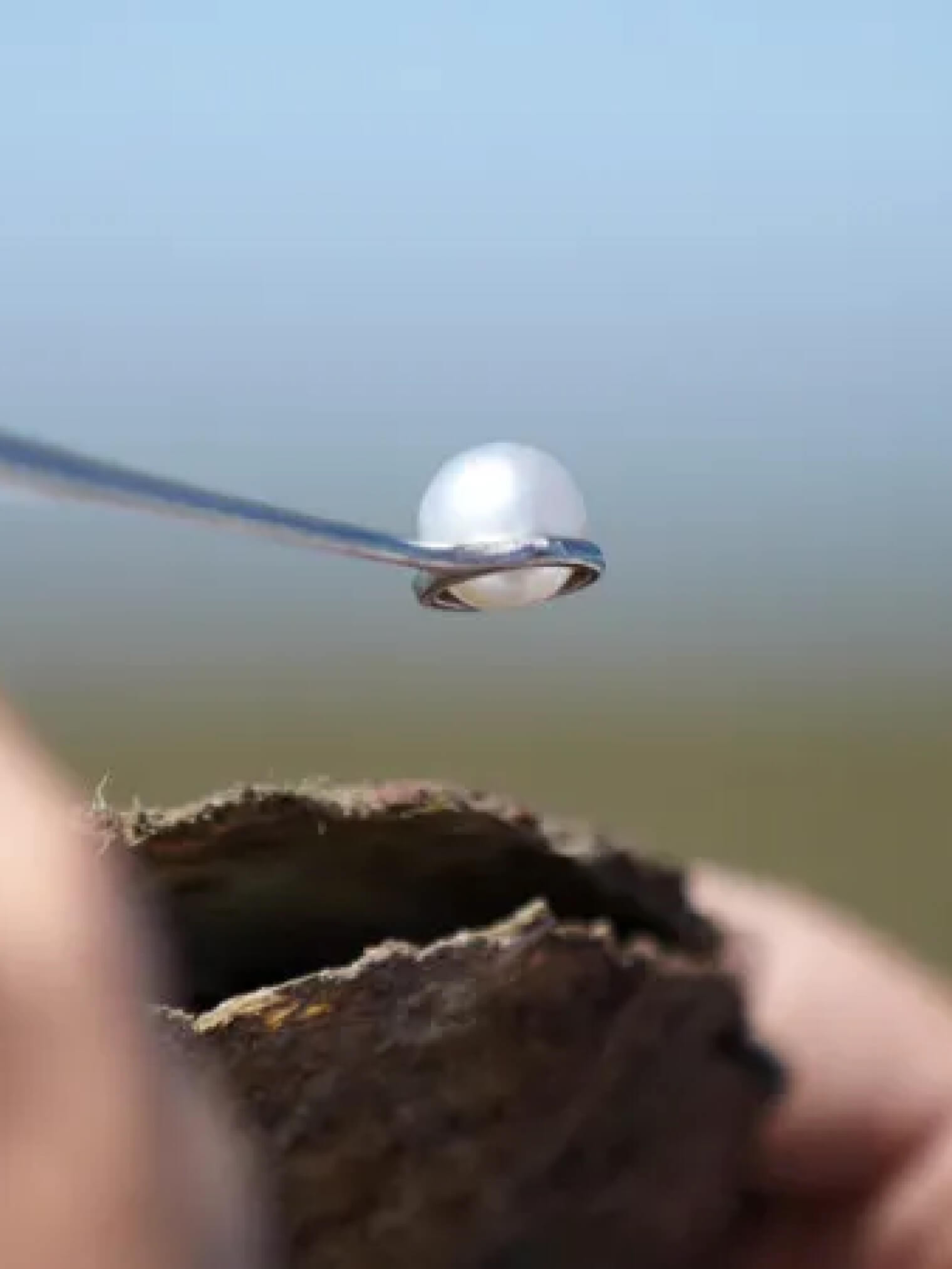
A naturally beautiful Paspaley pearl is removed from the Pinctada maxima oyster.
paspaley.com
Favorite happy-hour find:
On board Le Ponant, the daily cocktail didn’t disappoint. I loved the passion-fruit mojito.
Souvenir to bring home and where to get it:
It has to be a South Sea cultured pearl from the Kimberley. These highly coveted pearls can only be found in the pristine waters off this part of Western Australia. We spent a day on our sailing at the Paspaley cultured pearl farm – Australia’s first – in Kuri Bay, which we reached via Paspaley’s Mallard seaplanes. We learned about the operation and the lives of their workers. Many Kimberley pearl farms, including Paspaley, also have showrooms in Broome.

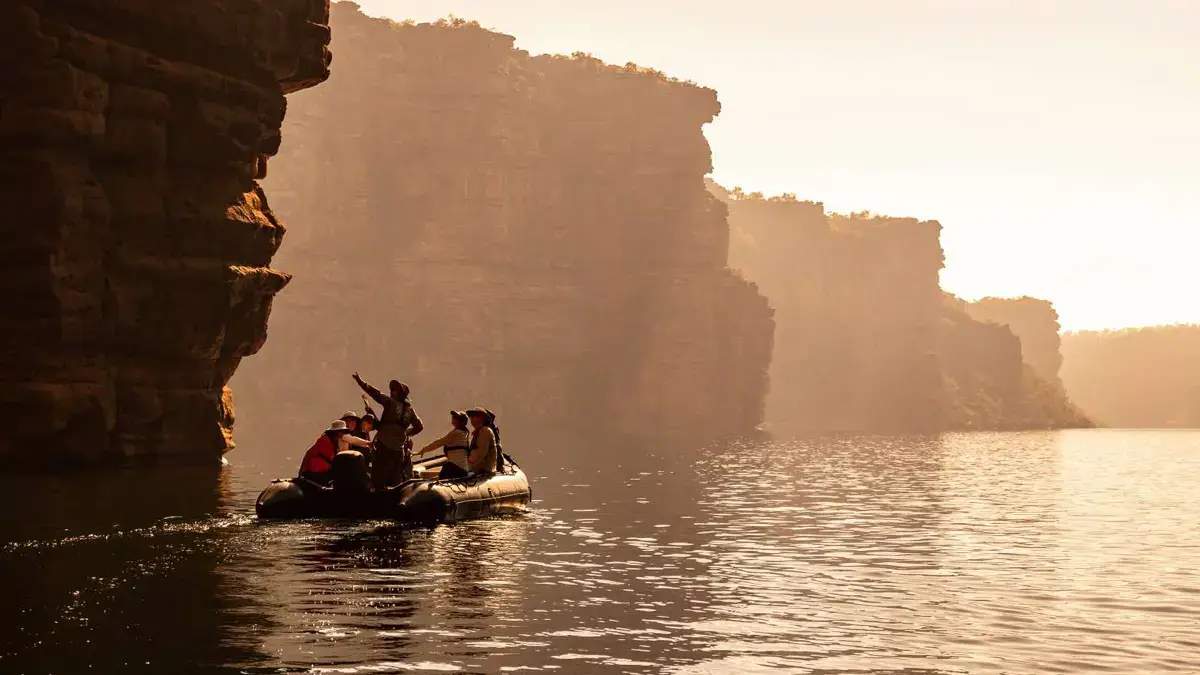
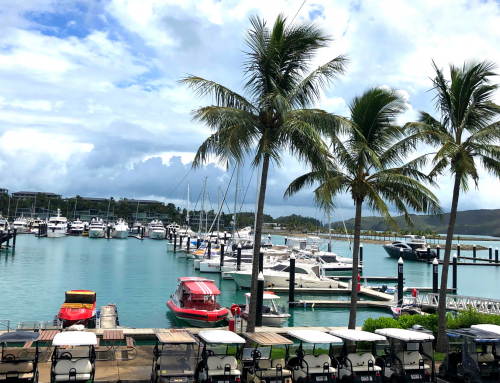
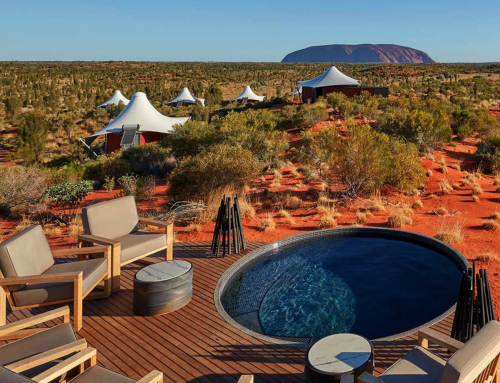


Leave A Comment